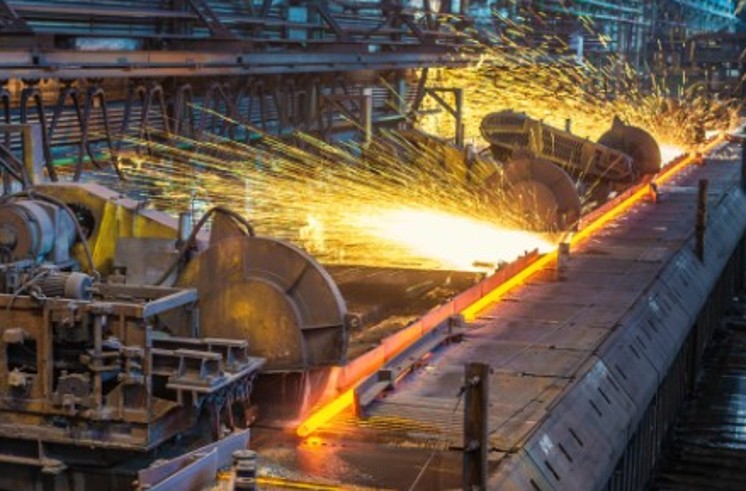NEWS
Forging the Future: How Steel Recycling Powers Sustainable Production and Economic Growth

In the ever-evolving industrial landscape, the weight of environmental responsibility increasingly falls on the shoulders of manufacturers. Yet amidst the clamour for sustainable practices, one material has stood the test of time, proving its worth not just in utility but also in environmental stewardship—steel. At the heart of this success story is the less-heralded hero of sustainability: steel recycling. As constituencies around the globe grapple with ecological challenges, steel recycling emerges as a sustainable saviour, underpinning both eco-friendly production and economic growth.
The Lifecycle of Steel: A Testament to Sustainability
The inherent durability and recyclability of steel make it a cornerstone of modern recycling efforts. Unlike many materials that degrade over time, steel can be recycled indefinitely without losing its quality. This extraordinary trait plays a pivotal role in sustainable manufacturing as it allows for the creation of new products from old steel, thereby conserving raw materials and energy. Moreover, steel recyclers form an essential network, recovering steel from various sources, ranging from construction scraps to decommissioned appliances.
The Environmental Impact of Steel Recycling
Steel’s recyclability extends far beyond the conservation of natural resources. It also reduces the need for mining, subsequently lowering greenhouse gas emissions and energy consumption. To produce one tonne of steel from raw materials, the energy equivalent to power an average household for ten days is required. Contrast this with recycled steel, which cuts energy consumption by a staggering 60-74%. The shift towards steel recycling signifies a major stride in industrial productivity that marries ecological consciousness with efficient production.
Boosting the Economy Through Resourceful Recycling
The act of recycling steel transcends environmental benefits and touches the very fabric of economic vitality. Every tonne of recycled steel saves approximately 1.5 tonnes of iron ore and reduces overall production costs. This cost-efficiency translates into lower prices for steel-consuming industries and cheaper products for consumers. Meanwhile, the steel recycling industry itself generates employment, with recyclers, sorters, and engineers playing crucial roles in turning scrap into valuable materials.
The Role of Recycling Bins in Steel Recovery
Stepping into the steel recovery process are the ubiquitous and instrumental steel recycling bins. These containers, strategically placed at businesses and construction sites, collect a multitude of steel products—facilitating easy recovery for recycling. By serving as the first point of collection, these bins ensure that more steel is captured and returned to the production cycle, rather than lost to landfills. Consequently, they not only boost recycling rates but also enhance the operational workflow within the circular economy of steel.
The Global Impact and Local Opportunities
On a global scale, steel recycling fosters collaboration between nations as they trade in scrap steel, enhancing diplomatic and economic relations. Domestically, it stimulates local economies through the generation of revenue and the provision of green jobs. As a result, the act of recycling becomes a shared endeavour that benefits individual societies and the international community as a whole. The adoption of sustainable practices in steel production is no longer a moral choice but a strategic imperative for the survival and success of businesses globally.
Steel Prices: The Nexus Between Recycling and Markets
It is widely acknowledged that market forces heavily influence the world of recycling. The volatile nature of raw materials pricing underscores the importance of a reliable source for recycled steel. This is where understanding trading metals scrap metal prices becomes invaluable. Competitive pricing of scrap metal is what drives the cost-effectiveness of steel recycling, ensuring its viability as a business and supporting the global shift towards sustainable practices.
The dynamic nature of the scrap metal market also serves as an indicator of economic health, reflecting demand for steel products and the operational tempo of industries. Keeping abreast of scrap metal prices and trends is crucial for businesses invested in steel recycling, as it informs their purchasing and operational strategies.
A Call to Action for Industries and Individuals
But how can industries and individuals alike contribute to this steel-strong future of sustainability and economic prosperity? Firstly, by being mindful of the end-of-life treatment of steel products and ensuring that they make their way to dedicated recycling bins rather than general waste streams. Secondly, by supporting policies that incentivise steel recycling and advancements in related technologies. Finally, by choosing products crafted from recycled steel and spreading awareness of its environmental and economic benefits.
Securing a Sustainable Future with Steel Recycling
Steel recycling is more than a mere environmental gesture; it is a robust approach to industrial production that offers a plethora of advantages. From conserving natural resources to reducing energy consumption and curbing emissions, the benefits are as solid as the metal itself. By engaging with steel recyclers, employing steel recycling bins and keeping an eye on trading metals scrap metal prices, industries can drive the wheel of sustainable manufacturing forward.
The narrative of steel recycling is one that weaves through the tapestry of modern industry, delineating a future where economic growth and environmental preservation are not mutually exclusive. As global societies edge towards this ideal, the role of steel as a recycled material is not only pivotal but indispensable.










